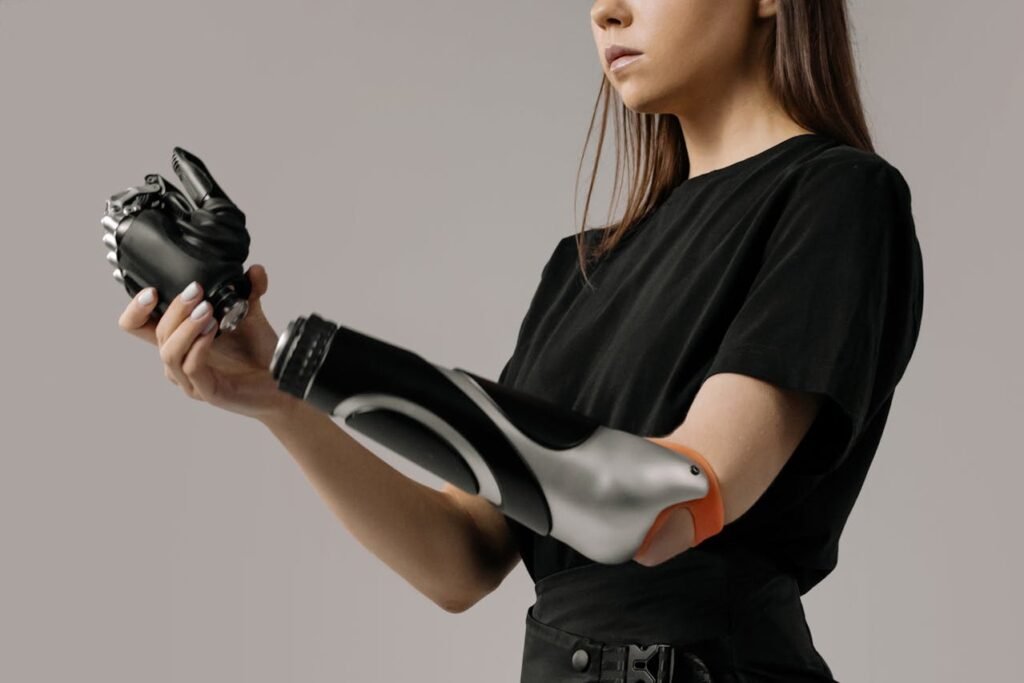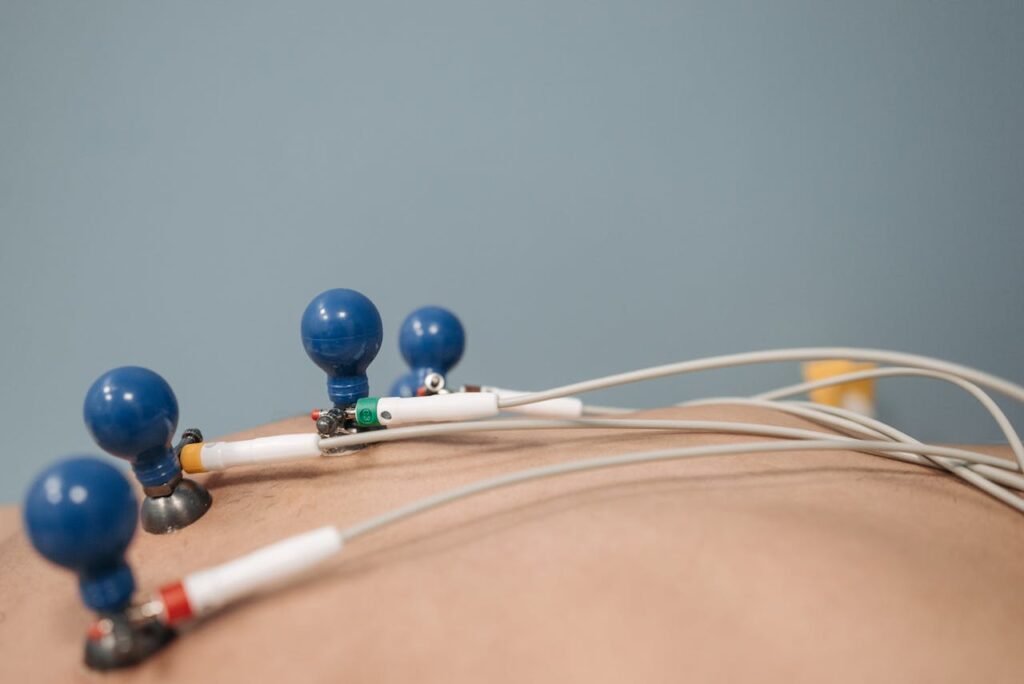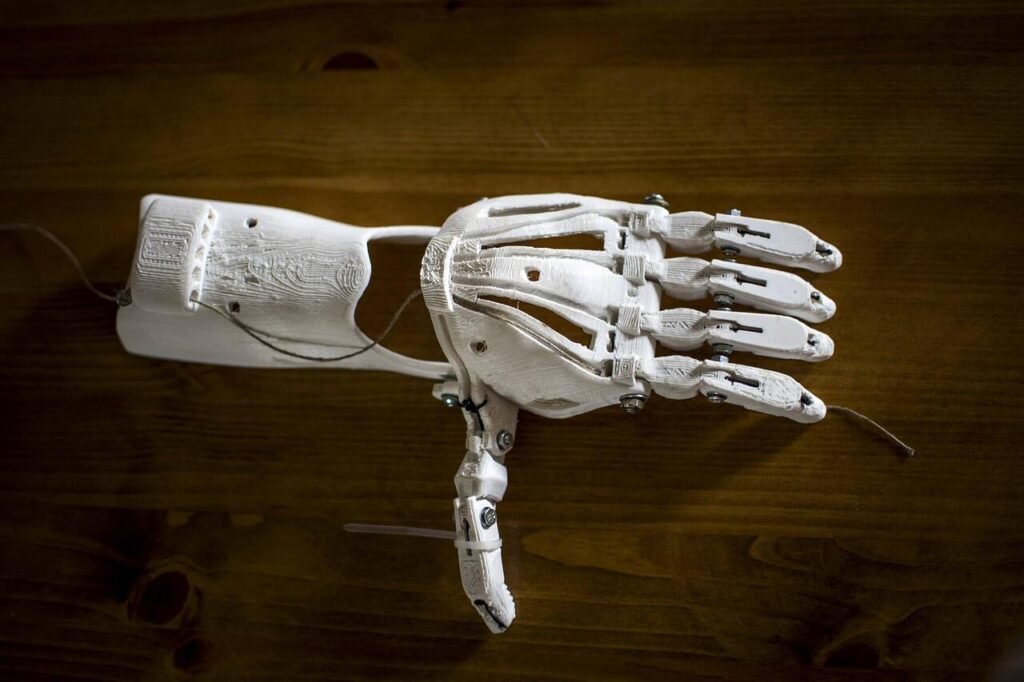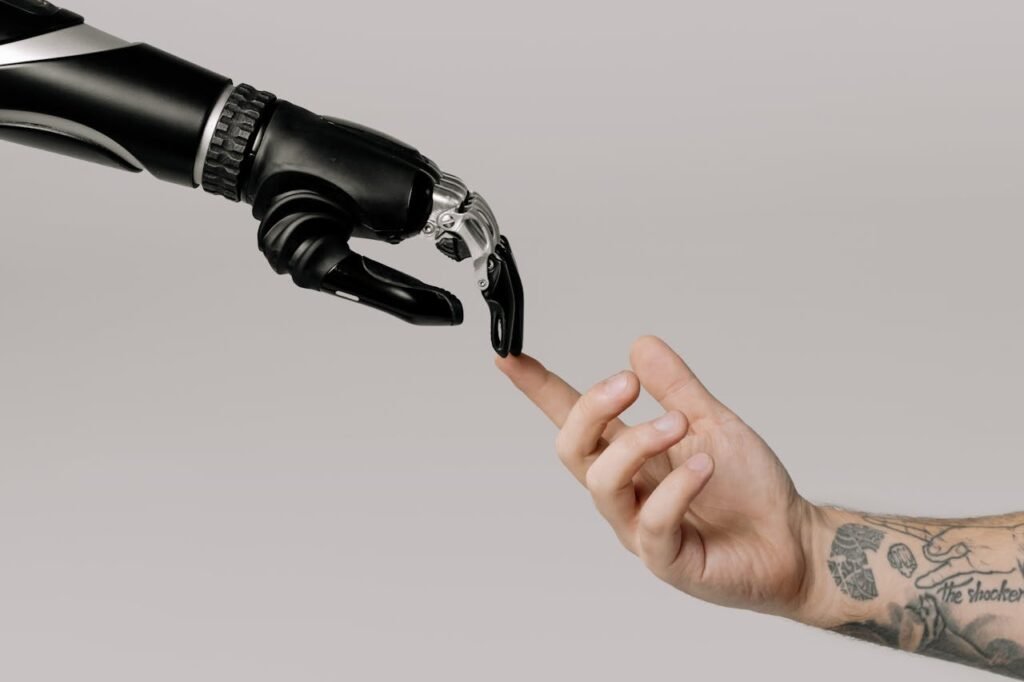For someone with a partial hand difference, everyday tasks can feel like climbing a hill. Holding a cup, buttoning a shirt, or picking up a bag—these simple things become challenges. That’s where technology steps in. One of the most promising tools today is EMS, or Electronic Muscle Stimulation. And no, it’s not just for athletes or bodybuilders. It’s now changing the game for people with limb differences—especially those with partial hand function.
In this article, we’re diving deep into how EMS can help improve grip strength. But we’ll keep things simple, real, and useful. No complex terms. No confusing talk. Just honest, helpful information that might make a difference in someone’s life.
Let’s get started.
What is EMS and How Does it Work?
Understanding EMS in Simple Words

EMS stands for Electronic Muscle Stimulation. It’s a small device that sends gentle electrical signals to your muscles. These signals make your muscles contract, just like they would if you were moving them on your own.
The idea is simple: your brain usually tells your muscles to move. But when that connection is weak or missing—like in partial hand differences—EMS can step in and help.
Why Muscle Stimulation Matters
For someone with a partial hand, the muscles in the hand or wrist may still be alive and working. But due to injury or limb difference, they may not be used much. When muscles don’t move, they get weaker.
EMS gives these muscles a little “wake-up call.” It keeps them active. It keeps them alive. Over time, this can lead to better strength, control, and even the feeling of movement returning.
How Does EMS Feel?
Most people describe it as a light tingling or a gentle tapping on the skin. It doesn’t hurt. You can control how strong or soft the signals are. It’s very safe when used correctly.
The best part? You can use it while sitting at home, watching TV, or reading a book. No big machines. No hospital visits.
How EMS Helps Grip Strength
The Problem with Weak Grip
Grip strength is everything.
It’s how you hold a pen, a toothbrush, or your phone. Without strong grip, daily life becomes frustrating. And for people with a partial hand, grip strength often fades over time because the muscles aren’t used enough.
Even if the fingers are missing, the muscles that once helped move them may still be there, waiting for action.
EMS Re-Activates Dormant Muscles
Here’s where EMS really shines. It targets the small muscles in the palm, wrist, and forearm. These are the muscles that control grip.
When EMS stimulates them, they begin to wake up. They start moving. Blood flows better. Over time, this repeated activation helps build strength.
And not just any strength—functional grip strength, the kind you use every day.
It’s Not Just About Strength
EMS also improves muscle memory. That means your hand starts “remembering” how to move again. For someone learning to use a prosthetic or trying to regain control, this is a big deal.
The better the connection between the mind and muscles, the easier it becomes to hold, lift, press, or pull.
EMS for Different Types of Partial Hand Users
Everyone is Unique
No two partial hand differences are the same. Some people may have a few fingers, while others may have a palm without digits. EMS can be adjusted to suit every situation.
That’s what makes it so powerful—it works with what’s already there, and builds from that.
Where EMS Electrodes Are Placed
The electrodes (the small pads that deliver the signal) are placed on parts of the skin where muscle is still present. This could be on the palm, wrist, or forearm.
The goal is to find the muscles that once helped with grip, and bring them back into action.
Sometimes, a bit of trial and error is needed to find the perfect spots. But once it’s figured out, the results can be amazing.
Custom Plans Work Best
Working with a prosthetist or therapist who understands your hand structure helps a lot. They can guide electrode placement, signal strength, and timing.
Many users see better results when EMS is paired with guided movement exercises or prosthetic training.
Benefits You Can Feel—and See
Better Control

As your grip muscles grow stronger, your control improves. That means less shaking, more precision. You might find it easier to pick up coins or hold a cup without spilling.
More Confidence
The emotional side matters too. When you can hold things better, you feel better. Your confidence rises. You stop worrying about dropping things or needing help.
You begin to trust your hand again.
Improved Prosthetic Use
EMS is also great for those using a prosthetic hand. Especially myoelectric hands like Grippy™.
It strengthens the muscles that control the prosthetic, making movements smoother and more natural. The prosthetic becomes an extension of your body, not just a tool.
When to Start EMS Training
The Sooner, The Better
If you’ve had a partial hand difference for a while, you might think it’s too late to start. But that’s not true.
Whether your hand difference is recent or happened years ago, EMS can still help. In fact, the earlier you start, the more muscle you can save and strengthen.
Starting EMS soon after surgery or injury (with your doctor’s okay) can prevent muscle loss before it even begins.
Post-Surgery Caution
If you’ve recently had an amputation, it’s important to wait for your doctor or prosthetist to give you the green light. The skin must be fully healed, and swelling should go down first.
Once you get the go-ahead, EMS can become part of your recovery plan.
Listen to Your Body
Every hand is different. Some may respond quickly. Others may need more time.
It’s okay to start slow. Just 15–20 minutes a day is enough in the beginning. The key is consistency, not intensity.
How to Use EMS Safely at Home
Choosing the Right Device
There are many EMS devices out there, from medical-grade units to simple, battery-powered versions.
For home use, a small portable device is perfect. It should come with adjustable settings, sticky pads (electrodes), and clear instructions.
Ask your prosthetist or rehab center to recommend one that suits your needs. Or reach out to us—we can guide you based on your hand type and goals.
Clean and Dry Skin Is a Must
Before placing the pads, always clean and dry your skin. This helps the pads stick better and avoids skin irritation.
Also, make sure the machine is turned off when applying or removing electrodes.
Where to Place the Electrodes
Start by placing the pads over the muscles in your forearm or the back of your hand. These muscles help with grip.
Move the pads around gently until you feel a soft twitch. That’s your sweet spot. Once found, stay consistent with placement.
Never place pads on broken skin, open wounds, or near your heart.
How Often to Use It
For most people, 3–5 sessions a week is great. Each session can be around 20–30 minutes.
Too much stimulation can tire your muscles out, so don’t overdo it. Let your muscles rest in between.
If you ever feel discomfort, stop and check placement or reduce intensity.
Making EMS Part of Your Daily Routine
Small Steps Lead to Big Change

The secret to real improvement is not big changes—it’s small, regular effort.
You don’t need a full gym or hours of therapy. Just sit down with your EMS device, put on the pads, and relax while the muscles do their work.
You can use this time to read, watch your favorite show, or simply rest.
Combine With Light Exercises
If your doctor allows, try pairing EMS with light hand exercises. For example, while the device runs, you can practice opening and closing your hand, or gripping a soft ball.
This helps your brain reconnect with your muscles faster.
Even stretching your fingers or wrist while the EMS runs can double the effect.
Track Your Progress
Keep a simple notebook or use a phone app to track your EMS use. Write down how many minutes you used it, what intensity felt right, and what you noticed.
Over time, you’ll see small wins—like stronger grip, less stiffness, or better hand control.
And each win is a step toward independence.
EMS and Grippy™: A Perfect Match
Why EMS Boosts Myoelectric Control
Grippy™ is a myoelectric bionic hand. That means it reads the muscle signals from your forearm to open and close the hand.
When your muscles are weak or out of practice, these signals can be too faint. That’s where EMS comes in.
EMS helps rebuild these muscles so they can send stronger signals. That makes it easier for Grippy™ to understand your intention and respond quickly.
Better Fit, Better Function
Stronger muscles also help you get a better fit with your prosthetic. A well-fitting socket means more comfort, better control, and longer wear time.
EMS doesn’t just improve your grip—it improves your relationship with your prosthetic.
Real Stories, Real Impact
We’ve seen it time and time again.
A user who struggled to pick up a spoon is now eating independently. Someone who once needed help buttoning a shirt can now dress with ease.
These changes may seem small, but they’re life-changing.
And EMS has played a powerful role in these stories.
Who Should Use EMS and Who Shouldn’t
Is EMS Right for Everyone?
While EMS can be incredibly helpful for many people with partial hand differences, it’s not for everyone. It depends on your individual condition, skin sensitivity, and medical background.
Some people may benefit more than others, especially if they have residual muscle movement in their hand, palm, or forearm.
The best way to find out? Talk to a prosthetist, rehab therapist, or reach out to our team. We can help assess if EMS will help in your specific case.
When to Avoid EMS
There are a few cases where EMS should be avoided.
If you have a pacemaker, heart problems, epilepsy, or metal implants in the stimulation area, EMS may not be safe. Also, if your skin is sensitive or injured, EMS should be paused until fully healed.
Pregnant women should also consult a doctor before using EMS, especially near the abdomen or lower back.
Remember, safety always comes first.
Building an EMS Program for Your Clinic or Practice
Why Clinics and Centers Should Care

If you’re running a prosthetic center, rehabilitation clinic, or therapy practice, you’ve likely seen the challenge firsthand—patients with partial hand differences often plateau in their strength and coordination. Traditional therapy helps, but it can be slow, and in some cases, frustratingly limited.
This is where EMS becomes a game-changer—not just for patients, but for your business too.
When used wisely, EMS can improve patient outcomes, increase satisfaction, and even open new service offerings. But to make it work, it needs more than just plugging in a device. It needs a system.
Create an EMS Protocol That Works
Start by building a clear, step-by-step protocol for EMS use in your clinic.
This includes identifying who the right patients are (partial hand users with preserved muscle function), training staff on electrode placement, and setting session durations. Build different “tracks” based on user types—like post-operative patients, prosthetic users, or older adults with chronic muscle loss.
Each track should have goals tied to grip strength, coordination, and prosthetic readiness. This not only helps patients progress faster—it also gives your therapists a clear roadmap to follow.
And remember, documentation is key. Make EMS part of the official therapy record. Track baseline grip data, weekly improvements, and user comfort. It builds confidence—for both patients and providers.
Offer EMS as a Value-Add Service
Instead of seeing EMS as just another tool, position it as a value-add.
For prosthetic clinics, EMS can be offered as a pre-prosthetic strengthening program. This prepares users—especially those getting myoelectric hands like Grippy™—to have stronger, more responsive muscles before they’re even fitted.
For rehab centers, EMS can be integrated into personalized grip recovery plans, alongside physical therapy. Over time, you can build full “EMS + Movement” classes that improve engagement and retention.
You can even offer EMS packages or subscriptions—10 sessions, monthly plans, or home-rental options using portable devices like BrawnBand.
This makes EMS not only a care tool but also a revenue stream.
Educate Users With Simple Language
The best EMS program in the world won’t help if your patients are confused or scared by it.
So, strip away the medical jargon. Use visuals to explain how EMS works. Let them try the machine in a calm, supportive setting. Encourage questions and normalize the tingly sensation they’ll feel during stimulation.
Use language like “muscle wake-up,” “gentle strength boost,” or “training for your prosthetic hand.” These phrases are easier to understand and much more inviting than technical terms.
Make a short video demo for your website or waiting area. Include testimonials from people who’ve seen results. This builds trust and curiosity.
Don’t Just Train Muscles—Train Staff
EMS works best when everyone on your team understands it.
Offer hands-on EMS workshops for your staff. Train them not just on the technical setup, but also on patient communication and emotional support.
Make sure every therapist knows how to adjust intensity levels, identify muscle fatigue, and personalize electrode placement. This prevents misuse and improves user comfort.
When your team feels confident, your patients will too.
Measure Outcomes That Matter
To truly showcase EMS’s value, you need to measure what it improves.
Set clear metrics like:
- Initial grip strength vs. after 5 sessions
- Ability to activate myoelectric sensors before and after EMS
- Reduction in prosthetic training time
- Increase in patient-reported confidence using their hand
You can even measure qualitative outcomes—like ease of buttoning a shirt or holding a glass. These daily activities are what matter most to users, and when tracked, they tell a powerful story.
Use this data in your marketing, reports, and community outreach. Let people see the difference EMS makes, not just in theory but in real life.
Partner With Tech Providers
If you’re not yet using EMS tools, now is a good time to explore partnerships with companies that understand partial limb differences.
At Robobionics, we offer full onboarding support with BrawnBand—our EMS solution designed for limb-different users. We train your team, supply the tools, and provide the materials you need to run effective sessions.
You don’t need to start from scratch. Let us help you build a complete EMS offering—branded, supported, and customized for your clinic’s goals.
You can even integrate BrawnBand use into the Grippy™ training path, giving your users a seamless journey from muscle strengthening to real-world function.
Stay Ahead of the Curve
EMS isn’t just a trend. It’s part of a larger shift in how we approach neuro-muscular recovery.
Being early to adopt this approach gives your clinic or practice a leadership edge. It shows you care about innovation, about outcomes, and about the real needs of your patients.
The clinics that succeed tomorrow are the ones that start building today. EMS gives you the tools—not just to treat, but to transform.
What Makes EMS Different From Regular Exercise?
They Work Together, Not Separately
You might wonder—if hand exercises help, why use EMS?
The answer is simple. EMS works deeper.
When you do hand exercises, you’re using the muscles you can voluntarily control. But EMS can reach muscles that might not respond to your efforts—yet.
This means you’re activating more muscle fibers, especially the smaller ones that are hard to target with exercise alone.
So, combining EMS and physical movement gives the best results.
EMS Doesn’t Replace Effort
Let’s be clear—EMS isn’t magic. It won’t do the work for you.
But it does help your muscles respond faster, grow stronger, and reconnect better with your brain. It gives your body a boost, so your efforts go further.
Think of EMS like a good coach. It pushes you just enough to improve, without overloading you.
Why Grip Strength Is About More Than the Hand
The Bigger Picture

Grip strength doesn’t start and end in the fingers. It involves the entire arm—wrist, forearm, elbow, and even your shoulder.
When you use EMS, it can trigger a chain reaction. Stronger grip leads to better wrist stability. That helps your elbow and shoulder move more freely. Your whole arm becomes more coordinated.
This is especially helpful for partial hand users who wear a prosthetic. Better muscle balance in the arm means better posture, less strain, and fewer long-term issues.
The Brain-Muscle Connection
Grip strength isn’t just physical. It’s also deeply connected to your brain.
Your brain learns through repetition. EMS helps feed the brain with real-time movement, even if the hand can’t move fully on its own yet.
This improves the brain’s “map” of your hand. Over time, this map gets clearer. That leads to smoother, faster, more natural movement.
Tips to Get the Best Results from EMS
Be Consistent, Not Perfect
Like anything in life, consistency wins. It’s better to use EMS three times a week every week than to use it daily for one week and then stop.
Set a routine. Pick a time that fits your day—maybe after lunch or before bed. Make it part of your rhythm.
Start Small, Then Grow
Begin with short sessions and low intensity. See how your muscles respond.
As you get more comfortable, increase the duration and strength a little. But never rush. Your body needs time to adjust.
Pair EMS With Real-Life Tasks
Try using EMS while doing light everyday activities.
For example, while folding clothes, holding a soft ball, or doing slow hand stretches. This helps your brain link the movement with muscle action.
It’s not just about building strength—it’s about building habits that your body remembers.
Celebrate the Small Wins
Every bit of progress matters.
Maybe your grip gets a little firmer. Maybe you pick something up faster. Maybe your hand feels less tired.
Write these things down. Talk about them with your therapist or prosthetist. Celebrate them.
Because every small win brings you closer to freedom.
Robobionics’ BrawnBand: EMS That’s Built for You
Designed With You in Mind

At Robobionics, we didn’t just build an EMS tool. We built one specifically for limb different users.
BrawnBand is our very own EMS device, crafted in India, with a deep understanding of what partial hand users need.
It’s lightweight, easy to use, and made to support the muscles that matter most for grip.
A Tool You Can Trust
We’ve worked closely with prosthetic experts, therapists, and real users to make sure BrawnBand is safe, effective, and user-friendly.
Whether you’re training to use Grippy™, or simply want to strengthen your existing grip, BrawnBand helps you build strength, control, and confidence—step by step.
Ready to Try It?
You don’t need to guess or figure it out alone.
Book a free demo with us and see how EMS and Grippy™ work together. We’ll walk you through everything—from electrode placement to training routines. And we’ll answer every question along the way.
Here’s the link to schedule your session: https://www.robobionics.in/bookdemo
We’re here to help you take the next step, literally and figuratively.
Final Thoughts: Strength Comes From Within
Using EMS to improve grip strength is not just about muscles. It’s about regaining control. Feeling independent. Trusting your body again.
For someone with a partial hand, that’s everything.
At Robobionics, we believe that technology should serve people—not the other way around. That’s why everything we build, from Grippy™ to BrawnBand, is designed to bring you closer to freedom.
No matter where you are in your journey, know this: your hand still has strength. Your story still has power. And with the right tools and support, your possibilities are wide open.
So take that first step. Let’s get stronger—together.



